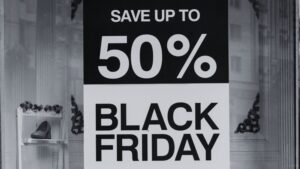What is Retail Analytics?
Retail analytics is the process by which analytical tools are used to enable us to analyze business patterns, performance levels and business trends, with a focus upon the retail industry. By sourcing the relevant data and managing it effectively a business can gain great insight into their customers and improve upon crucial factor. These include optimizing store layouts, greater customer experience and increasing profits.
What are the Benefits of Retail Analytics?
Customer Journey Insight
Through effective implementation of analytics across a business’ channels, we can gain insight into a consumer’s behavior right across the purchasing journey. This can highlight areas to improve upon, such as offers and possible optimizations, allowing for increased purchases maximizing revenue.
Customer Loyalty
Throughout a customer’s purchasing experience both online and in-store, they will exhibit behavior towards their tastes and preference. With retail analytics a business can get an in-depth view of this, and as such tailor their value proposition to drive sales and improve brand loyalty.
Anticipation
With the careful analysis of a business’ sales, you can start to gather data regarding customers purchasing behavior. This allows a business to effectively forecast future trends and consequently product demand. Of course this comes with many benefits, such as improved stock management, maximizing sales with accurate pricing to reflect demand as well as greater organization in a business’ supply chain.
How can you Implement Retail Analytics Into Your Business?
Businesses should remember that optimal implementation of retail analytics is always a tricky task to execute. Like many things in life, you shouldn’t be discouraged at not perfecting it the first time around. With this in mind, what can they do to try and ease into this process and try and gain the insights they need to make their business thrive?
DIY: Analysing Sales Patterns v Customer Data
This can be seen as the bare minimum that a business can do; this information should be readily available for a business, utilizing in-house data. By assessing this information, you can analyze trends in purchasing behavior versus footfall, whilst also helping optimize such matters as staffing costs and stock management.
Whilst there are benefits to this process, it can produce challenges for a business. Despite it being in-house, conducting this analysis can be very time consuming and further than simply collating all of the relevant data, a business must have the personnel to be able to properly understand and manipulate it to gain actionable insight into the business.
Consulting
There are a lot of marketing analytics consultancy companies out there; they can provide a range of services that include: retail concept strategies, retail growth strategies, cost management efficiency, marketing and brand building services, commercial due diligence and much more. On top of the multitude of services, having a consultant provides an external set of eyes to give impartial expert advice and recommendations.
However, whilst this plethora of tools can be hugely beneficial to any business, it does come at a cost, which can be quite an inhibitive hurdle to many businesses. As such it is an important decision that merits much consideration and evaluation into alternatives to hiring a consultancy; do we need consultancy? Or can we find specific solutions at a lower cost more tailored to our needs than a general consultancy?
Retail Solutions
As we’ve seen, there are a lot of ways retail analytics can help benefit a business. As a result, there are a lot of companies out there offering solutions to help solve these problems. These companies provide a more accessible price to small businesses without the bigger upfront cost they would face by hiring a consultancy. This therefore provides a much more flexible approach to solving any gaps they may have.
One such solution is Olvin’s flagship SaaS platform, Almanac, the first platform to provide instant, real-world insights and forecasts. Almanac is an AI driven platform, designed with businesses in mind to provide them with accurate, meaningful analysis and forecasts. Retailers can get clear insight into their consumers behavior and much more. With a combination of top tier data-sets gathered from over 1 billion data points per day and the intuitive predictive and analytical tools present on the platform, businesses can get an insight into their industry instantly with the easy-to-use tools available.
Retail Analytics for Your Industry
Retail
One issue that Almanac can help solve for retailers is supply chain planning. Now more than ever, retailers are under pressure to ensure their stock is optimally allocated between stores, preventing issues arising. Using Almanac’s Compare tool, retailers can select their branches from metropolitan areas and as such see at a glimpse how stores have been performing and even further, the forecast of how they are likely to perform in the near future. With this insight, retailers can plan for the near future and maximize sales by re-allocating stock accordingly ahead of time. All while also saving money in transit costs by avoiding the hassle and stress of last-minute restocking.
Marketing
Retail marketing analytics departments are tasked with executing social campaigns to target customers, but are often faced with the issue of working out who exactly to target, as well as when and where?
Using Almanac’s Consumer Analysis tool, retailers can look at their most valued consumer demographic; this takes into account their income and their life stage – single/married/kids etc. Secondly, marketers can utilize the Consumer Search tool, which enables you to identify where exactly these consumers are to be found at any point during the day, allowing for improved targeting to a business’ desired audience.
All of this insight can be easily accessed and nurtured into a meaningful targeting of a business’ consumer. This of course saves time and resources in reaching the most valued customers.
Real Estate
Real estate consultants are often faced with the task of seeking out a new store location for their clients. This can be a tricky affair as there are many factors to consider, as they not only need to understand the desired demographic of the business, but to optimally locate a vacant property in order to attract as much of this demographic as possible. This can be a laborious and expensive task, with this information hard to come by cheaply and often out-of-date.
with Almanac, consultants can effortlessly access up-to-date and instant insights towards their goal; for example with the Consumer Search tool, a consultant can search for where young adults, with a middle-high income congregate on a Friday night. Once they have several potential locations, they can use the Relative Performance Analysis, which analyses historic performance of an area, as well as forecasting its potential. This allows for a quick and easy way for consultants to identify up-and-coming areas for their clients. All for a fraction of the usual cost and effort.
Conclusion
Getting a grip of retail analytics can be difficult for retailers of any size. However, there are many options available to suit any need or budget. Through proper implementation of any of the methods mentioned in this article, businesses can see results. Then, they can consequently start to better understand their business and their consumers like never before.
Almanac helps companies understand what drives consumers. It allows businesses to look forward and get comprehensive insights into consumer behavior.





